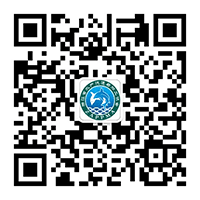关于6月30日本协会网站发布的《智利鲑鱼养殖业去年抗生素使用达9年来最高点》一文中信息翻译失误,现更正如下:
原文中“智利境内已掌握的25家企业海水养殖场中有96%超高使用了抗生素,其中已有22家同意向外界公开数据”更正为“使用了所有抗生素量的96%的25家海水养殖场企业中的22家已经同意向外界公布他们的数据”。
特此更正,并对由此造成的不良影响,深表歉意!
浙江省水产流通与加工协会
二〇一六年七月一日
附:《智利鲑鱼养殖业去年抗生素使用达9年来最高点》英文版原文
Antibiotics use in salmon
farming reaches highest point in 9 years
The use of
antibiotics in the salmon industry reached 557 tons in 2015, according to the
latest report of the National Fisheries and Aquaculture Service (SERNAPESCA), a
figure consolidating the tendency to their intensive use over the past five
years.
The figures,
corresponding to 46 companies in the sector operating in both freshwater and
the sea, pushed the consumption rate per tonne of salmon to reach its highest
point in the past nine years, with 660 grams per tonne.
The amounts
used in Chile, where it is delivered orally through feed and also as vaccines,
are above those in other producing countries such as Norway, where the figure
is less than one tonne per year.
Christine
Bornes, adviser to the Norwegian Food Safety Authority (FSA), said it is
important to reduce its use due to the drug resistance that can be transferred
to humans, she told La Tercera.
Paul
Midtlyng, a researcher at the School of Veterinary Medicine at the Norwegian
University of Life Sciences, pointed out that the reduction is related to fish
vaccination. "We need to develop effective vaccines," he warned,
while acknowledging that it is not always easy, and it can be quite expensive.
After the
high figures in the report, Alicia Gallardo (head of SERNAPESCA Animal Health
Department) announced that SERNAPESCA will take additional measures to regulate
antibiotics use. For example, the prohibition of the drugs in the quinolone
group (flumequine and oxolinic acid) during the feedlot phase at sea will be
set as there is no national surveillance programme to verify the resistance.
In addition,
in order to increase control of the treatments that each farming centre
implements, the official said that the "retained prescription" system
will be made enforceable for prescribing antimicrobial drugs.
Felipe
Sandoval, president of SalmonChile, the trade union bringing the sector
representatives together, explained that Chile can not be compared to Norway
because the conditions are not the same. "There, other diseases are
present and they use chemicals that we do not deal with here, they are very
different situations," he stated.
The
spokesperson announced that they will issue a sustainability report with
antibiotics use in its associated companies in 45 days. The publication is
given in the context of a legal dispute maintained by the NGO Oceana with the
industry. The environmental entity wants to know how much is being used by each
company, but SERNAPESCA can not release such information without the
authorization of the firms involved.
"The
salmon industry understands the demands of the communities to know these
numbers," said Sandoval.
The union
clarified that despite its use the salmon of Chilean origin in the markets is
antibiotics-free.
On the
policy of reducing these drugs, it argues that it relates to the greatest
innovation in vaccines and to the fact that concessions should operate in more
remote ways, among other changes.
SERNAPESCA
reported that so far, out of the 25 companies operating in the sea, which is
where 96 percent of the antibiotics is used -- 22 firms have already agreed to
give permission to disclose their data.




